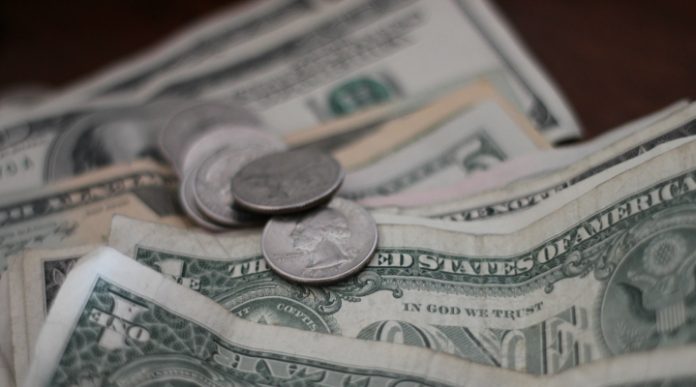Geopolitical tensions between the US and Russia prevented the dollar capitalising on the weaker pound. The pound US dollar exchange rate experienced a volatile session on Wednesday but was almost flat as it moved towards the close of the session at US$1.4177.
| What do these figures mean? |
|---|
|
When measuring the value of a pair of currencies, one set equals 1 unit and the other shows the current equivalent. As the market moves, the amount will vary from minute to minute. For example, it could be written: 1 GBP = 1.28934 USD Here, £1 is equivalent to approximately $1.29. This specifically measures the pound’s worth against the dollar. If the US dollar amount increases in this pairing, it’s positive for the pound. Or, if you were looking at it the other way around: 1 USD = 0.77786 GBP In this example, $1 is equivalent to approximately £0.78. This measures the US dollar’s worth versus the British pound. If the sterling number gets larger, it’s good news for the dollar. |
Economic indicators pointing to a slowing of economic growth for the UK economy weighed heavily on the pound. Economic data across several sectors of the economy disappointed investors and by substantial margins. UK manufacturing output in February ended its year long expansion, contracting in February by -0.2% month on month. Analysts had expected the sectors to grow by 0.2%. The sectors had been enjoying growth over the past year thanks to a cheaper pound and strong global demand. However, there have been signs that global demand is easing as data from France, Germany and Italy showed a similar loss of momentum.
The UK construction sector also contracted sharply in February by -1.6%. Analysts had expected the sector to have expanded by 0.9%. The heavy slowdown across these sectors points to a slowing of the UK economy in the 1st quarter. As a result, pound was out of favour.
| Why does poor economic data drag on a country’s currency? |
|---|
| Slowing economic indicators point to a slowing economy. Weak economies have weaker currencies because institutions look to reduce investments in countries where growth prospects are low and then transfer money to countries with higher growth prospects. These institutions sell out of their investment and the local currency, thus increasing supply of the currency and pushing down the money’s worth. So, when a country or region has poor economic news, the value of the currency tends to fall. |
With no more high impacting economic data due to be released this week, investors will switch their attention back to the Bank of England (BoE). Policymaker Broadbent and BoE Governor Mark Carney are due to give speeches today. Any signs of further support for a May rate hike could boost the pound.
| Why do raised interest rates boost a currency’s value? |
|---|
| Interest rates are key to understanding exchange rate movements. Those who have large sums of money to invest want the highest return on their investments. Higher interest rate environments tend to offer higher yields. So, if the interest rate or at least the interest rate expectation of a country is relatively higher compared to another, then it attracts more foreign capital investment. Large corporations and investors need local currency to invest. More local currency used then boosts the demand of that currency, pushing the value higher. |
US Military Threats Weigh On Dollar Despite Hawkish Fed
The dollar was under pressure in the previous session, despite a more aggressive sounding Federal Reserve. The Fed minutes from the most recent policy meeting showed that all Fed members were expecting and increase in economic growth and an increase in inflation. Higher inflation expectations mean that a more hawkish Fed, with a faster pace of rate hiking, could be on the cards. This would normally boost the dollar.
However, geopolitical concerns overshadowed a more hawkish Fed, as President Trump centres his attention on Syria and Russia in response to the chemical attack on Syria. Trump took to Twitter to warn Russia that “missiles are coming”. Russia urged the US to refrain from its plans and it remains unclear how things will progress. Dollar traders are showing signs of nerves in the face of military threats as relations between the US and Russia appear worse than during the Cold War.
|
This article was initially published on TransferWise.com from the same author. The content at Currency Live is the sole opinion of the authors and in no way reflects the views of TransferWise Inc. |





